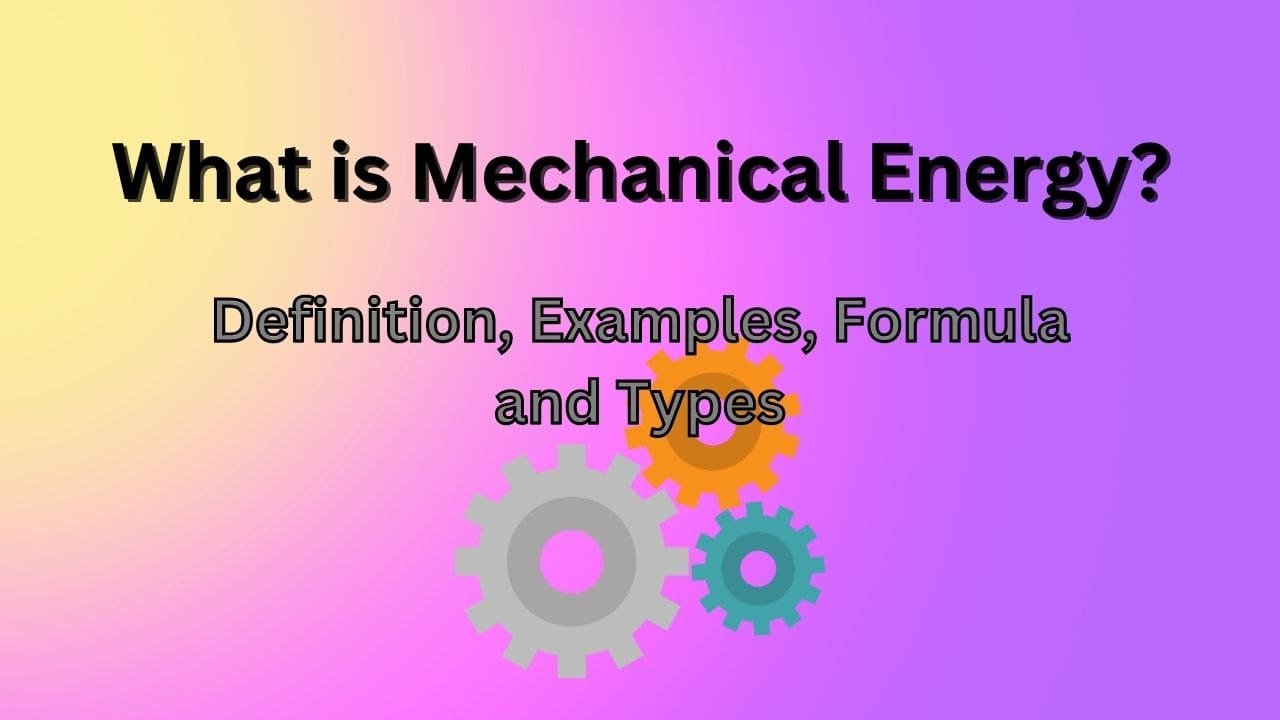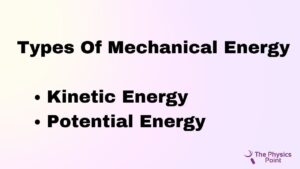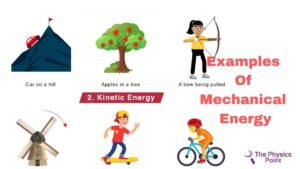What is Mechanical Energy? Definition, Examples, Formula and Types

Hello, students and readers of the Physics Point website, you are very warm welcome to the new article on physics and what is mechanical energy. in this article, we will tell you very important points about mechanical energy and its related Terminology. before knowing much about mechanical energy you can also read our previous article on energy. Mechanical energy is a sum of different types of energy which we are going to study in this important article what is mechanical energy.
some important questions from the exam point will be described here in a very proper way so that you can learn them easily. These questions are What is Mechanical Energy, mechanical energy, define mechanical energy, examples of mechanical energy, mechanical energy definition, mechanical energy examples, mechanical energy formula, the formula of mechanical energy, etc. We request you to read this whole article from the very first paragraph to the last paragraph to avoid any misunderstanding of the concepts.
What is Mechanical Energy (Definition)?
Mechanical energy is comprised of both the energy an object possesses due to its motion ie. kinetic energy and the energy it stores due to its position or configuration i.e. its potential energy, resulting in a total sum of mechanical energy for the object. It is of the following two types:
- Kinetic energy
- Potential energy

Kinetic energy
The energy that a body has due to its motion is called kinetic energy. Mass of a body is directly proportional to the kinetic energy. More mass leads to more kinetic energy. Less mass leads to less kinetic energy. Kinetic energy is also directly proportional to the speed of the body. More speed, more kinetic energy. Less speed, less kinetic energy. Kinetic energy depends on two factors:
- Mass of the body
- Speed of the body
Example – A person hit by a car at 80 km/hr will be more injured than a person hit by a car at 40 km/hr. If we consider a body of mass moving at speed ‘v’, then the kinetic energy possessed by it is given by
Potential Energy
Potential energy is the energy possessed by an object depending on its position relative to other objects, the object’s mass (m), the gravitational acceleration constant (g), and the height above the ground (h). It is called potential energy.
Formula for Potential Energy: W = m×g×h = mgh
Dimensional Formula of Potential: [ M L 2 T-2 ]
Examples of Mechanical Energy
There are many two types of examples of mechanical energy that is called potential energy and kinetic energy.
- A rolling ball: If there is any ball rolling on the ground then the rolling ball possesses kinetic energy. Rolling ball also possesses some potential energy due to their configuration in the respect to the ground.
- A moving car: The moving car also possesses kinetic energy and some potential energy due to its configuration with respect to the ground.
- A pendulum: The pendulum is also moving to and fro about a mean point. When the pendulum is at its highest possesses the potential energy and when the pendulum comes towards the mean point, it has some velocity that is some kinetic energy.
- A spring: Whenever you expand or compress any spring, this act of work done is stored in the spring in the form of potential energy.
- A spinning top: It has kinetic energy due to its motion, which means the spinning top has kinetic energy by its spinning motion.
- A swinging rope: When you swing up any rope on any holder, at that time it has kinetic energy because of its motion and potential energy because of its configuration with respect to the ground.
- A falling object: An object which is falling down from any height, having both the energy that is kinetic energy and potential energy.

Conservation of Mechanical Energy
According to the Physics laws, the sum of all mechanical energy of a system remains conserved. it means we can say that energy cannot be created and cannot be destroyed by any method. We can change only the form of the energy. it means the energy is interconvertible to its different types of forms.
Formula Of Mechanical Energy
The total sum of all kinetic energy and all potential energy always remains a constant value. (only when the conservative force acting on the object)
KE + PE = constant
KEi+ PEi = KEf+ PEf
Here’s a beautiful example of mechanical energy that further explains the concept of mechanical energy, Suppose a car is moving in one direction linearly under the action of a force (conservative nature). It makes a displacement of dx, At this time now the law of work energy theorem applies and we see that the total work done on this car comes out to be equal to the change in the motion energy of the car which is called the kinetic energy of the car. we can write this in mathematical form ;
dKE = F. dx
The change in kinetic energy is represented by here dKE.
Frequently Asked Questions (FAQs)
Ques. What is mechanical energy of the system?
Ans. Mechanical energy is comprised of both the energy an object possesses due to its motion ie. kinetic energy and the energy it stores due to its position or configuration i.e. its potential energy, resulting in a total sum of mechanical energy for the object.
Ques. What is the statement of conservation of mechanical energy?
Ans. The total sum of all mechanical energy of a system remains conserved always. which means that The sum of total kinetic energy and total potential energy always remains constant. (only behind the conservative force acting on the object)
Ques. By using which device we can easily convert the electrical form of energy into the mechanical form of energy?
Ans. An electric motor is a device by using which we can convert the electrical form of energy to the mechanical form of energy.
Ques. What are the two forms of mechanical energy?
Ans. Potential energy and kinetic energy are the two forms of mechanical energy.
Ques. What is kinetic energy?
Ans. Kinetic energy is the energy of any moving object. This energy is only due to the motion of the object. as the object stops moving its kinetic energy becomes zero.
Conclusion
The main conclusion of today’s article is on what is mechanical energy. is that we had learn many things about mechanical energy and also study its types and examples. we also discuss some important types of questions such as types of mechanical energy, mechanical energy meaning, total mechanical energy, uses of mechanical energy, what are the two forms of mechanical energy, what are the two kinds of mechanical energy, mechanical energy uses, etc. For any doubt or any suggestions related to the article what is mechanical energy, you can ping us in the comment section box given below the article. we will be back wy the new physics article very soon.
